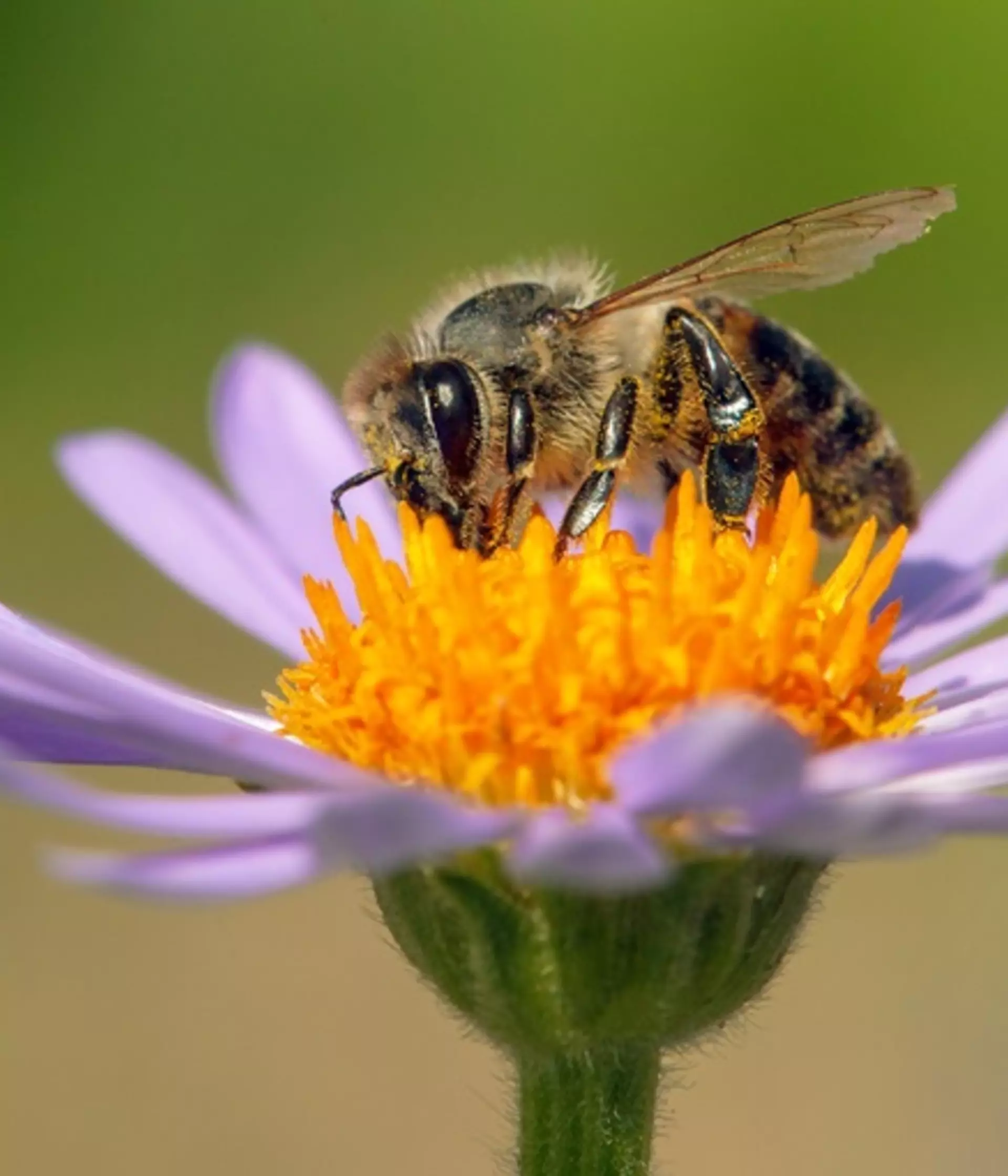Remember when bees were always buzzing?
Honeybees are one of thousands of species of pollinators up against threats such as pollutants, habitat loss and insecticides. All around you at our conservation Zoo you will spot re-wilded areas vibrant with flowers selected especially for pollinators. Visit the hive in our Tiny Giants exhibit during the warmer months to see our honeybees abuzz in their transparent hive,
What do Honeybees look like?
Honeybees' bodies are made up of three parts, a head, a thorax and an abdomen and feature black and brown stripes. As infants, they hatch from cells of honeycomb in their hives in a pupal form, just like caterpillars - before emerging into the busy buzzing fully-grown bees we see flying around less and less, these days.
What do bees eat?
Different species of bee, of which there are thousands, have varying tastes for pollen and nectar from their plants of choice. They'll spend all year collecting from buds and blooms to make honey in their hive cells which are carefully sealed and stored away to feed themselves over the colder winter months.
Honeybee facts
- There are around 20,000 known species of bees, of which honeybees are only a fraction.
- Honeybees communicate through chemicals, body movements and odours.
- They have five eyes and can see ultra violet light.
- Honey can change colour depending on the plants local to that particular hive. Bees confused by local soft drinks manufacturers have been known to produce honey in bright greens and reds!
Where do honeybees live?
Nestled away in cosy hives, you can find honeybees across Europe, the Middle East and Africa. None of this sub-species of bee are native to the Americas, where you'll find different sub-species instead. Take a closer look next time you see a bee, the UK alone is home to over 270 different species, some who even work alone - they're known as 'solitary bees'.
What threats do honeybees face?
Honeybees are under threat from pests and parasites, but more recently Colony Collapse Disorder is proving to be a bigger problem. This is a phenomenon whereby worker bees from the colony suddenly disappear. Changes in habitat management and gardening habits have also left bees struggling to find sources of food. You can help them by planting some of their favourite plants like honeysuckle, lavender and sage.
We are all conservationists. The simple act of providing shelter for precious pollenators in your back garden and providing them with areas left overgrown can make an immense difference. We've got plenty of tips for making your garden more wildlife-friendly in low-cost and easy ways.
